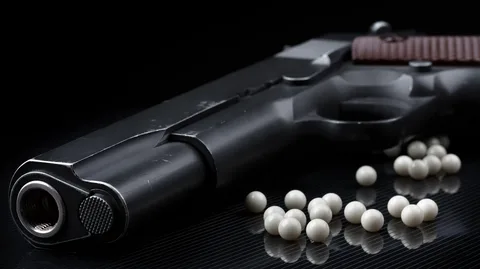Introduction BB guns have long held a fascination for enthusiasts of all ages, blending the thrill of shooting sports with the safety and accessibility suitable for beginners. From backyard plinking to competitive shooting, these air-powered guns have carved out a unique niche in the firearms world. In this exploration, we delve into the intricacies of BB guns, examining their history, mechanics, uses, safety considerations, and the joy they bring to countless individuals.
History and Evolution The lineage of BB guns traces back to the late 19th century when the Daisy Manufacturing Company first introduced the “BB” air rifle, named after the size of the ammunition, which resembled birdshot. These early models were simple spring-piston guns, often made of wood and metal, and were primarily used for small game hunting and target practice. Over the decades, advancements in technology led to the development of CO2-powered, pneumatic, and even electric BB guns, offering greater power, accuracy, and convenience.
Mechanics and Operation Modern BB guns operate on various principles, including spring-piston, CO2, pneumatic, and electric mechanisms. Spring-piston guns rely on a coiled spring to compress air, propelling the BB forward upon trigger release. CO2-powered guns utilize small cartridges of carbon dioxide gas to propel the BB, offering semi-automatic or even fully automatic firing capabilities. Pneumatic guns require manual pumping to build pressure, while electric BB guns use batteries to drive a motorized mechanism for automatic firing. Each type has its advantages and limitations, catering to different preferences and applications.
Uses and Applications BB guns serve a multitude of purposes, ranging from recreational shooting and pest control to competitive marksmanship and firearms training. Many enthusiasts enjoy informal plinking sessions in their backyard or at designated shooting ranges, honing their shooting skills and enjoying the satisfying ping of hitting targets. Additionally, BB guns are commonly used for pest control, providing a humane alternative to traditional firearms for deterring small animals and pests. Moreover, competitive shooting sports such as “Steel BB Gun” competitions offer a platform for skilled marksmen to showcase their accuracy and speed, fostering camaraderie and sportsmanship among participants.
Safety Considerations While BB guns are generally considered safer than firearms due to their lower muzzle velocities and non-lethal ammunition, safety remains paramount. Proper handling and storage are essential to prevent accidents and injuries, especially considering that BB guns can still cause harm if misused or mishandled. Safety guidelines include treating BB guns with the same respect as firearms, always assuming they are loaded, never pointing them at anything you don’t intend to shoot, and wearing appropriate eye protection when shooting. Additionally, teaching and enforcing these safety practices, especially among young shooters, is crucial for fostering a culture of responsible gun ownership.
Conclusion In conclusion, BB guns continue to captivate enthusiasts worldwide with their blend of precision, safety, and fun. From their humble beginnings in the late 19th century to the modern, technologically advanced models available today, BB guns offer a diverse array of options for shooters of all levels and interests. Whether it’s casual plinking in the backyard, competitive marksmanship, or practical pest control, the versatility and accessibility of BB guns make them a beloved staple in the world of shooting sports. As long as safety remains a top priority, the joy and camaraderie fostered by BB guns will continue to endure for generations to come.

